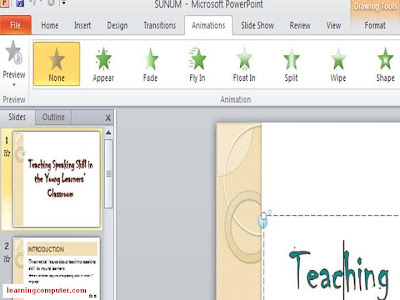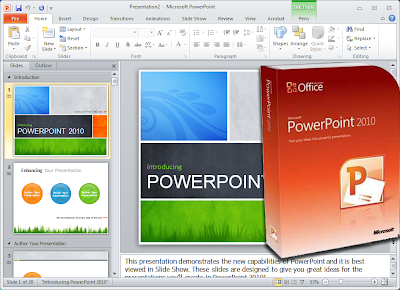Power point
Originally designed for the Macintosh computers, the initial release was called "Presenter", developed by Dennis Austin and Thomas Rudkin of Forethought, Inc. In 1987, it was renamed to "PowerPoint" due to problems with trademarks, the idea for the name coming from Robert Gaskins. In August of the same year, Forethought was bought by Microsoft for $14 million USD ($27.1 million in present-day terms), and became Microsoft's Graphics Business Unit, which continued to develop the software further. PowerPoint was officially launched on May 22, 1990, the same day that Microsoft released Windows 3.0.PowerPoint changed significantly with PowerPoint 97. Prior to PowerPoint 97, presentations were linear, always proceeding from one slide to the next. PowerPoint 97 incorporated the Visual Basic for Applications (VBA) language, underlying all macro generation in Office 97, which allowed users to invoke pre-defined transitions and effects in a non-linear movie-like style without having to learn programming
PowerPoint 2000 (and the rest of the Office 2000 suite) introduced a clipboard that could hold multiple objects at once. Another noticeable change was that the Office Assistant, whose frequent unsolicited appearances in PowerPoint 97 (as an animated paperclip) had annoyed many users, was changed to be less intrusive.
Microsoft PowerPoint 2010
PowerPoint 2010 has changed from its predecessor. Screen Capturing has been introduced, allowing you to take a screen capture and add it onto your document. Also, you can now remove background images and you can add special effects, such as 'Pencil effects' onto pictures. Plus, new transitions are available. However, the ability to apply certain text effects directly onto existing text, seen in Microsoft Word is not available; a separate WordArt text box is required.
File formats
In Microsoft Office 2007 the binary file formats were replaced as the default format by the new XML based Office Open XML formats, which are published as an open standard. Nevertheless, they are not complete as there are binary blobs inside of the XML files, and several pieces of behaviour are not specified but refer to the observed behaviour of specific versions of Microsoft product.
 Session 1 included Introduction to Power Point(overview), Basic Ms, Power Point(Slides & views), Applying theme and background, Working with images and clipart, Screenshots and Transitions, Working with Word Art and Shapes, working with videos and bookmarking and finally Summary.
Session 1 included Introduction to Power Point(overview), Basic Ms, Power Point(Slides & views), Applying theme and background, Working with images and clipart, Screenshots and Transitions, Working with Word Art and Shapes, working with videos and bookmarking and finally Summary.All these were just the basics of Power Point which is start of learning it.
 Our lecturer taught us how to insert images, audios, videos and design them. Usually our lecturer teach us in the beginning of class and gives us the task which is related to topic and gives us certain time to finish it.
Our lecturer taught us how to insert images, audios, videos and design them. Usually our lecturer teach us in the beginning of class and gives us the task which is related to topic and gives us certain time to finish it.Session 2
2nd session included just recap previous lessons, Smart Art illustrations, Rehearse and Record Slide Shows, Broadcasting a presentation, Hyperlink and Action buttons and Summary as well.
Week 8 – session 2
Presentation Skills: Microsoft Power Advanced
 Session 2 included Introduction to Power Point(overview), Basic Ms, Power Point(Slides & views), Applying theme and background, Working with images and clipart, Screenshots and Transitions, Working with Word Art and Shapes, working with videos and bookmarking and finally Summary.
Session 2 included Introduction to Power Point(overview), Basic Ms, Power Point(Slides & views), Applying theme and background, Working with images and clipart, Screenshots and Transitions, Working with Word Art and Shapes, working with videos and bookmarking and finally Summary.Learn more advanced techniques in PowerPoint such as working with slide masters, creating new design templates or themes, automate your presentations, rehearse the timings, copy or move slides between presentations and working with multiple computers.
No comments:
Post a Comment